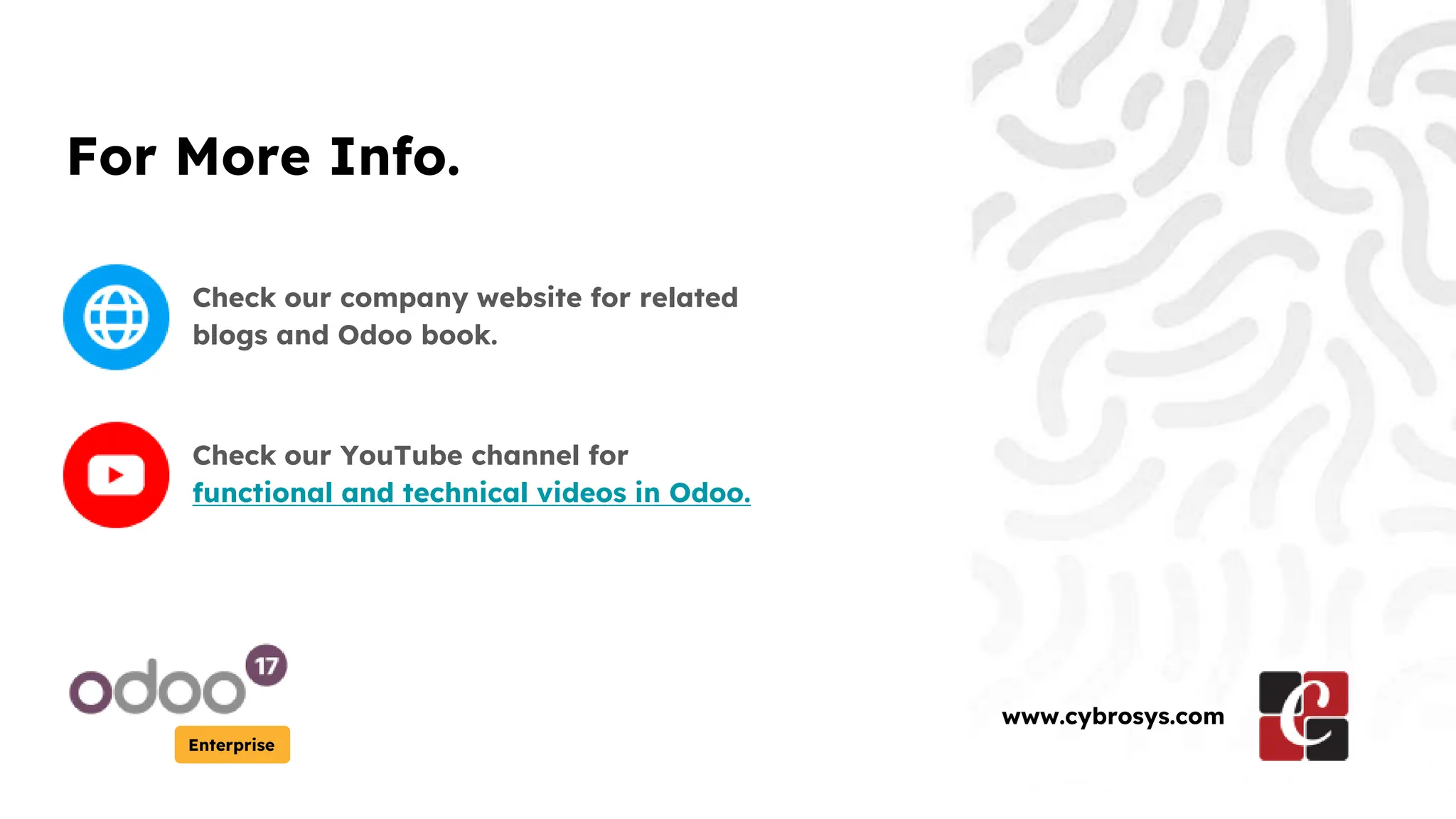Odoo 17 Enterprise offers a security mechanism to manage data access for users within a business application. Users can have specific rights such as create, read, update, and delete based on their group affiliations, with the ability to belong to multiple groups. Custom models require an ir.model.access.csv file for setting access permissions, which must also be included in the module's __manifest__.py file.
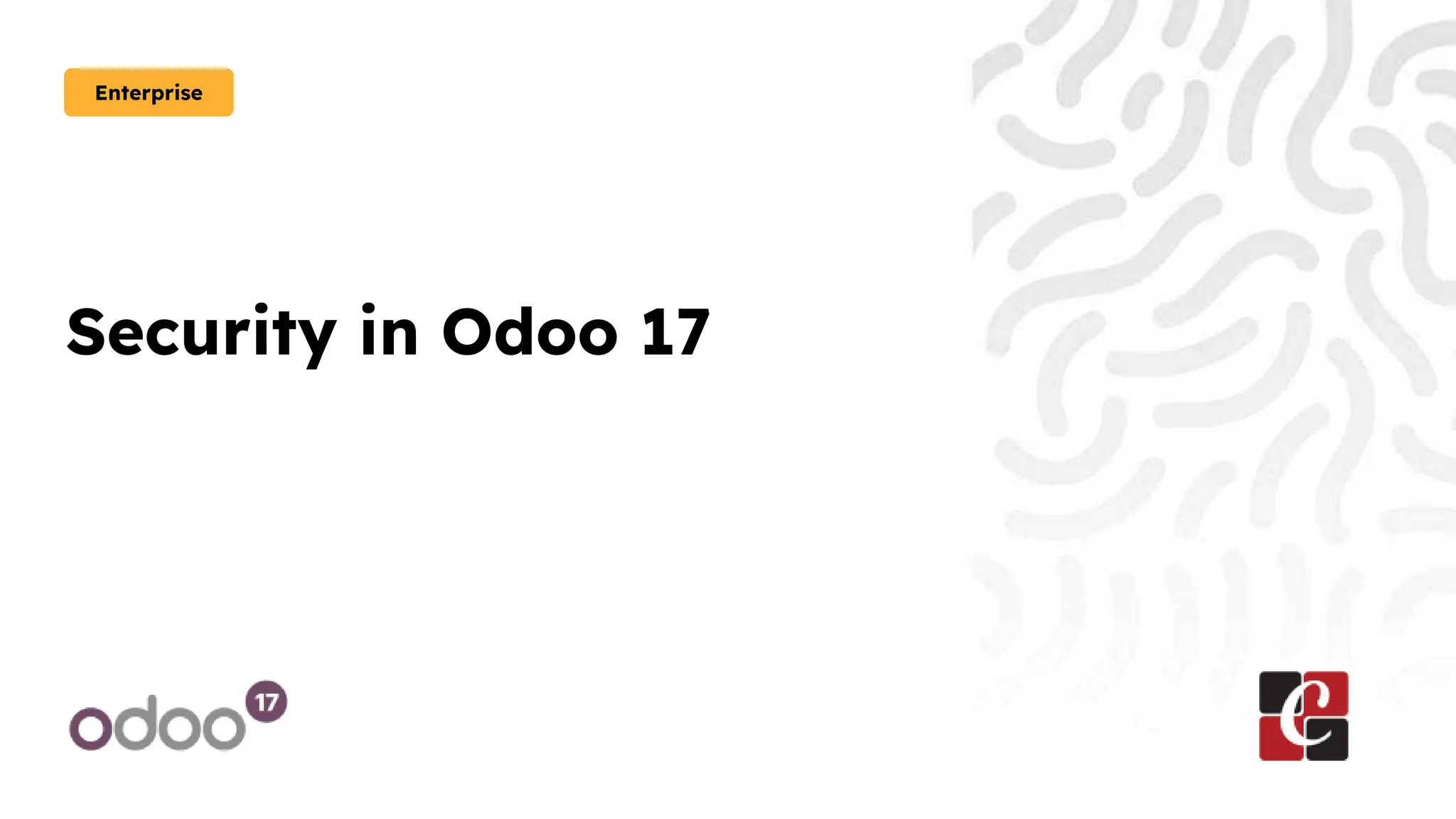
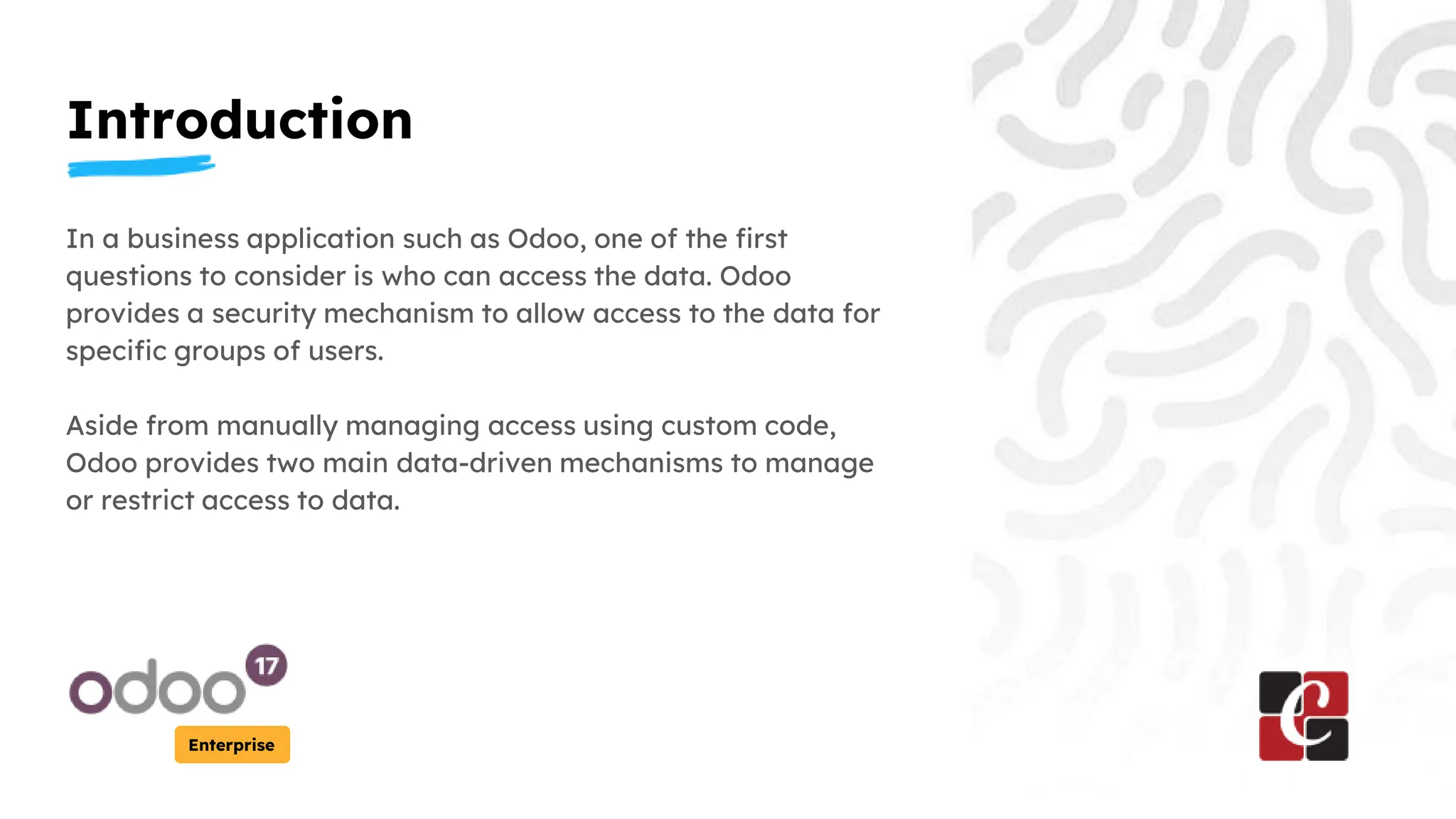
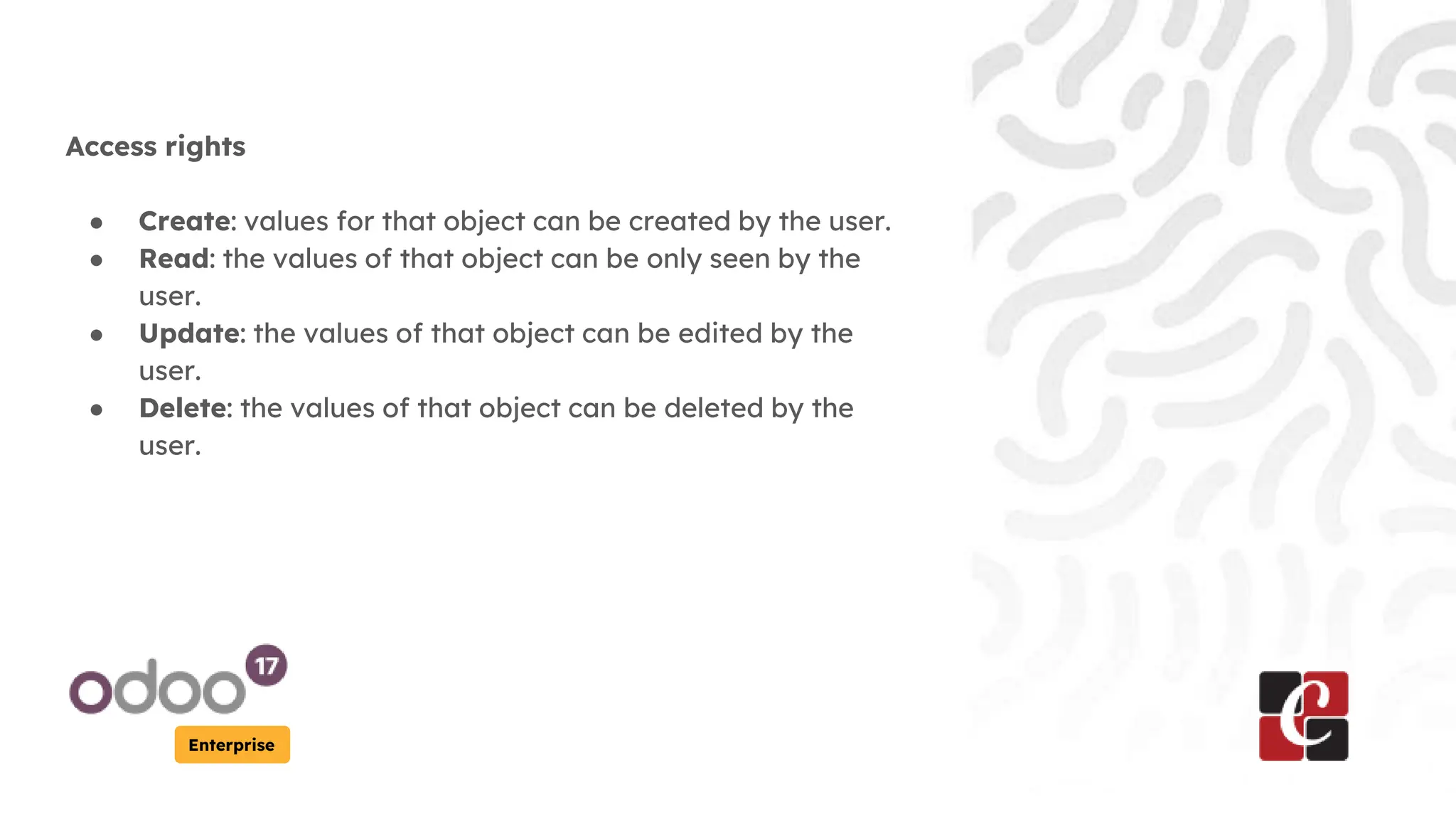
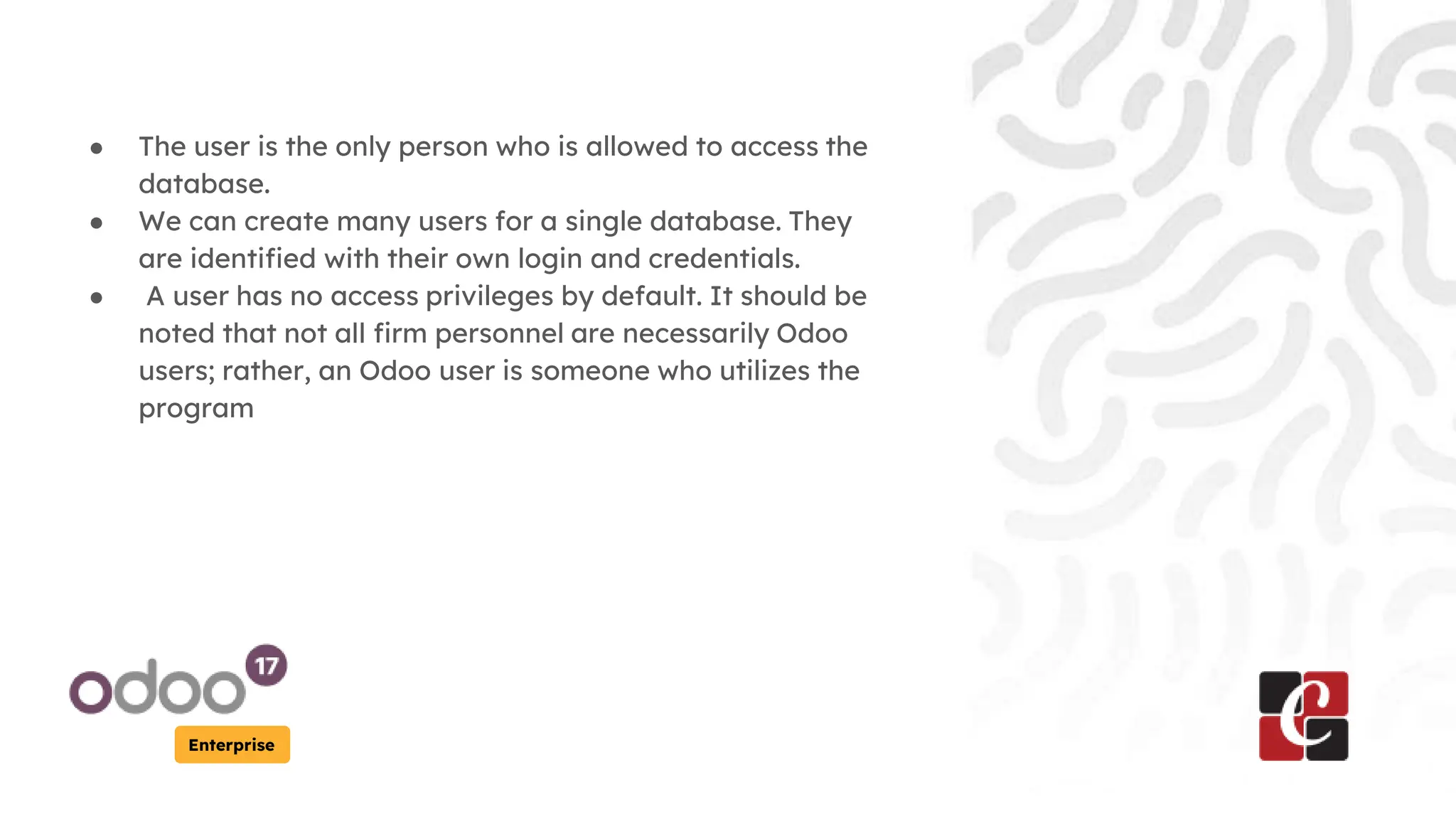
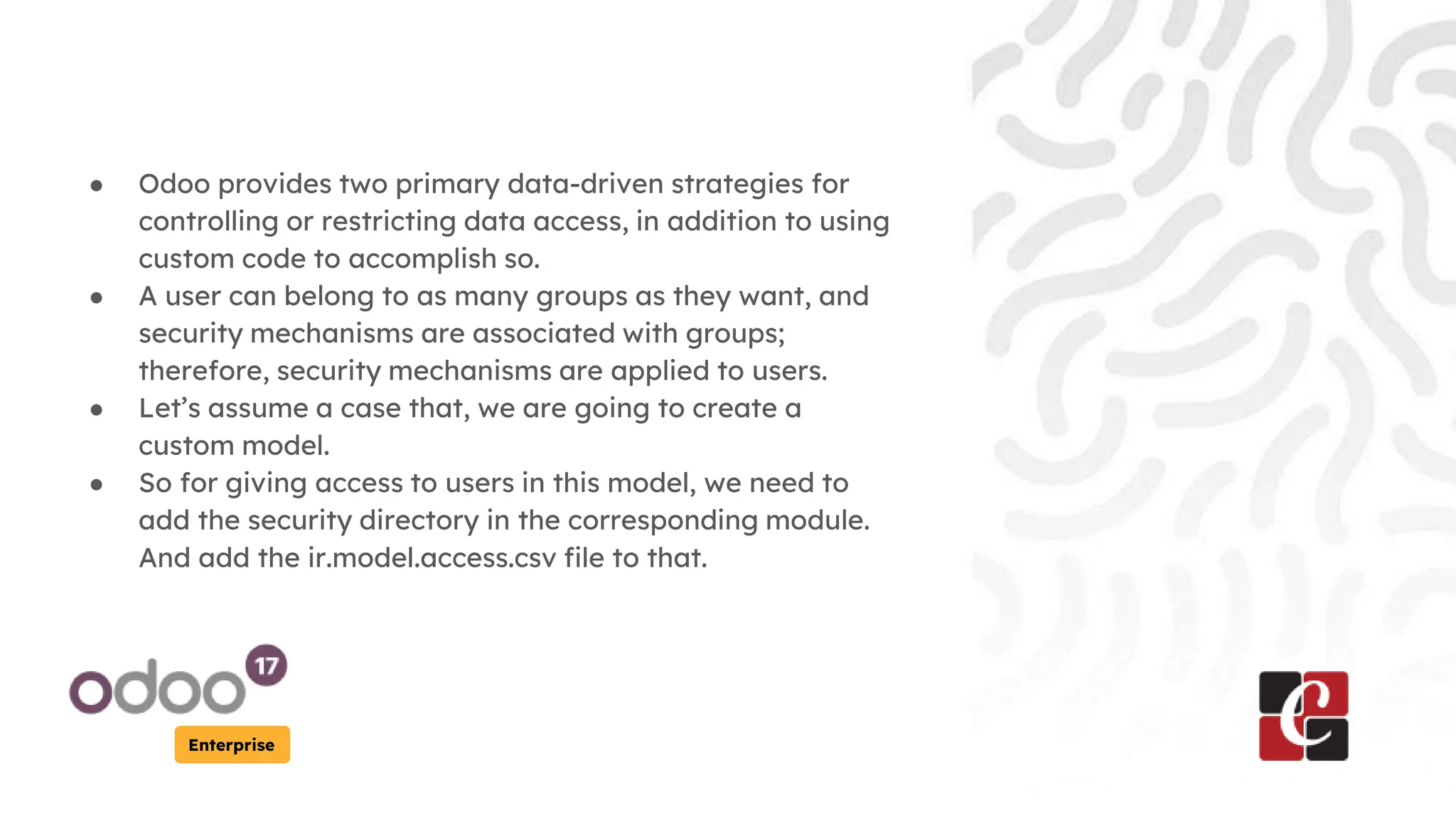
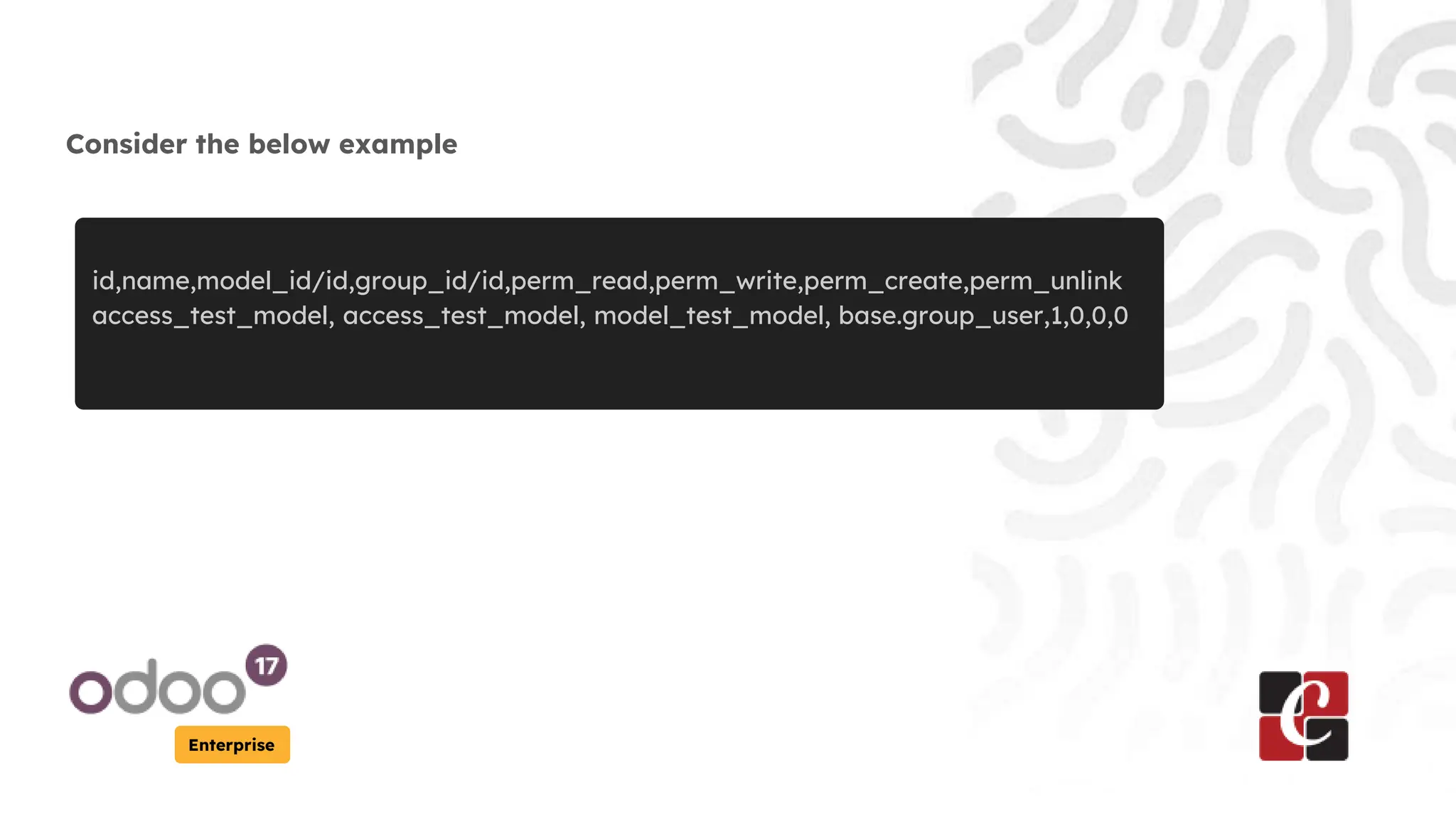
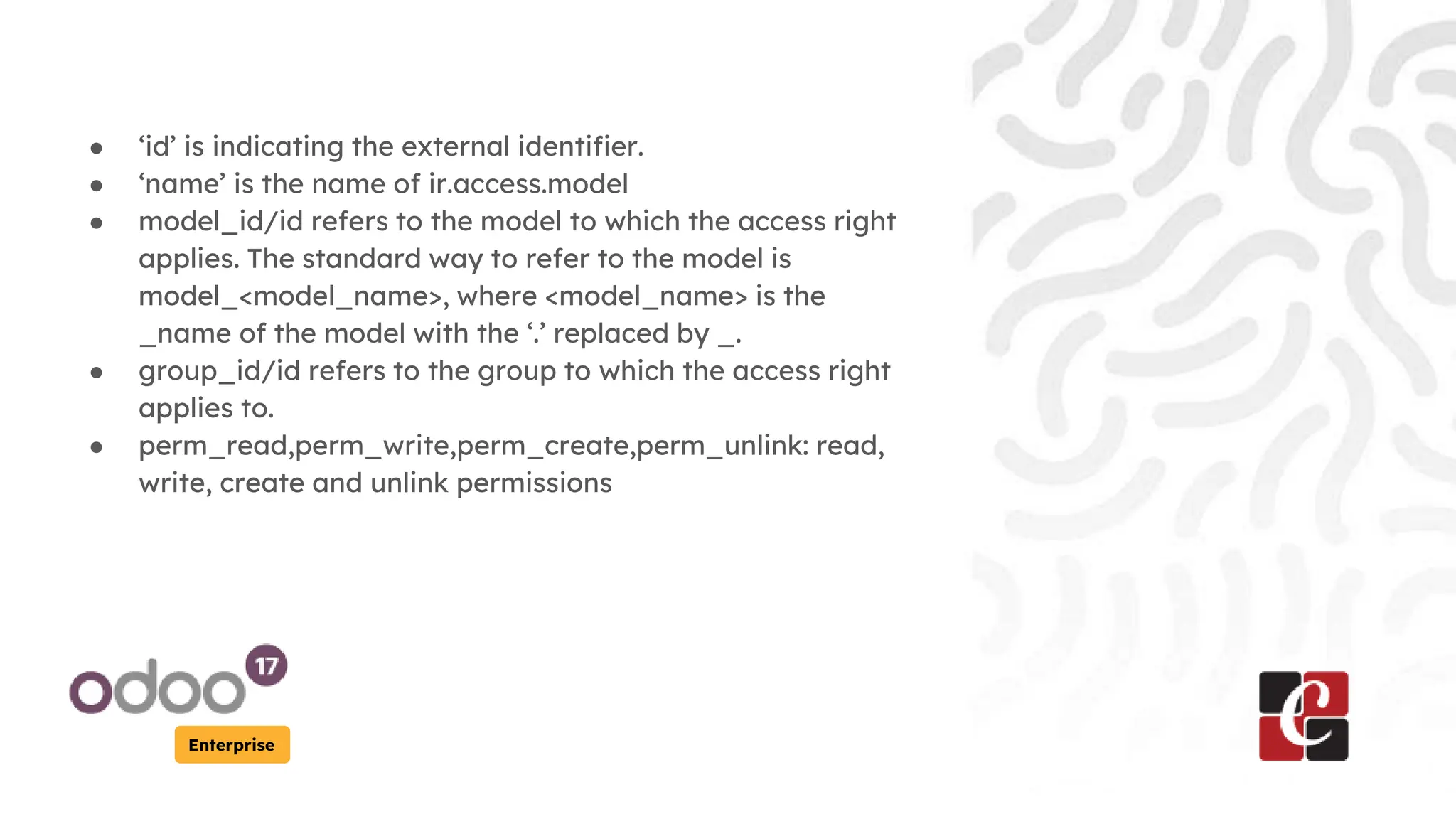
![Enterprise
Finally, need to add this ir.model.access.csv file to the
__manifest__.py file.
'data': [
'security/ir.model.access.csv',
],](https://image.slidesharecdn.com/securityinodoo17-240307042234-01894620/75/Protecting-Your-Odoo-17-Security-in-Odoo-17-8-2048.jpg)
